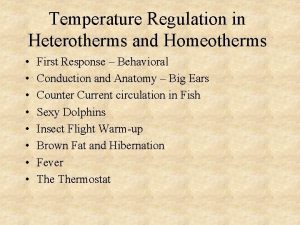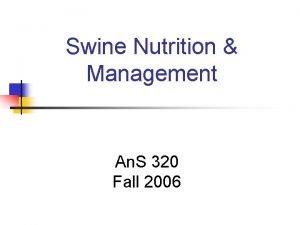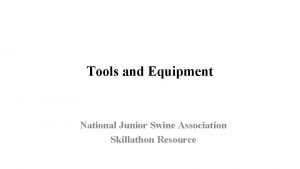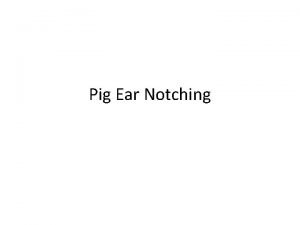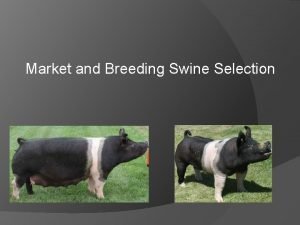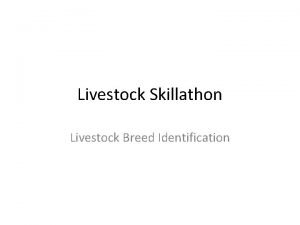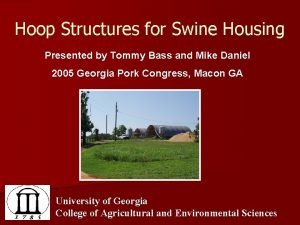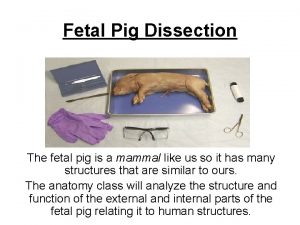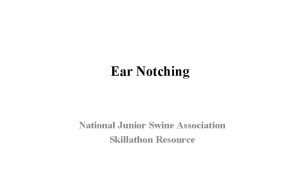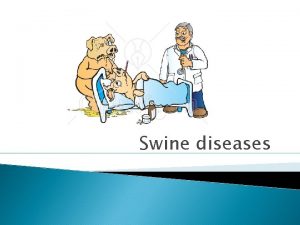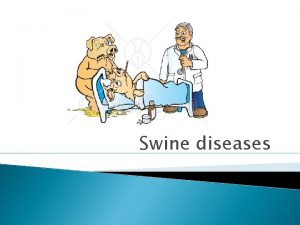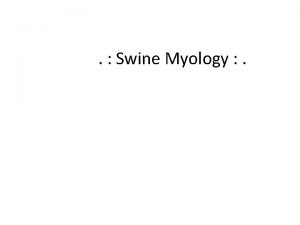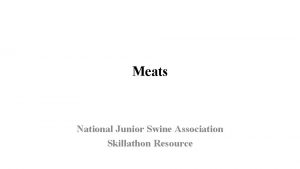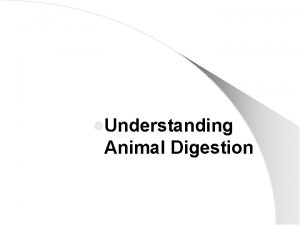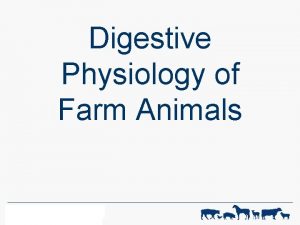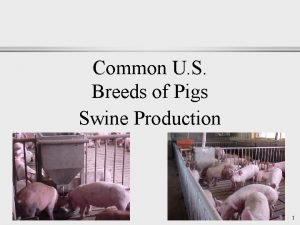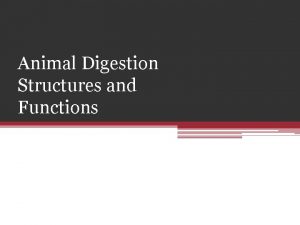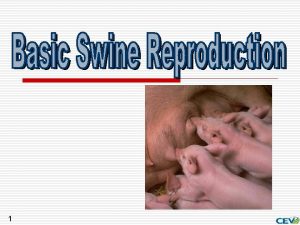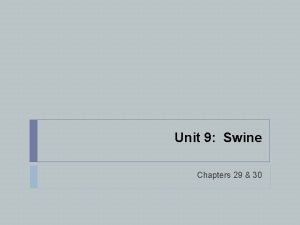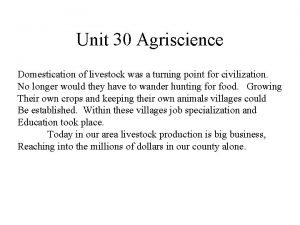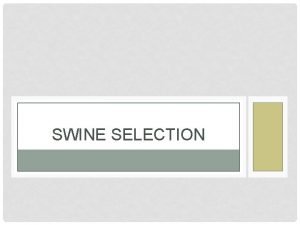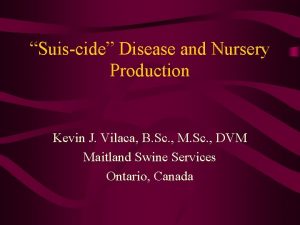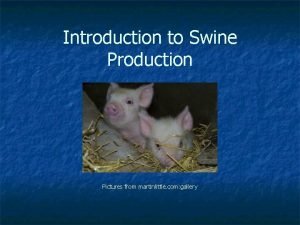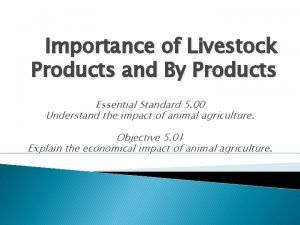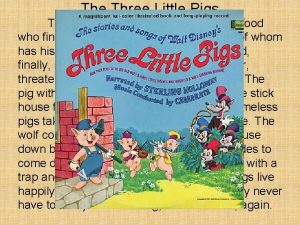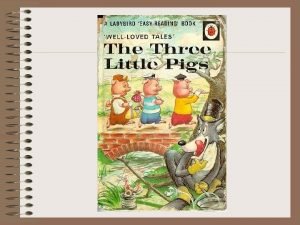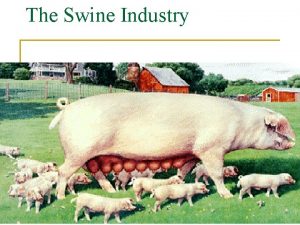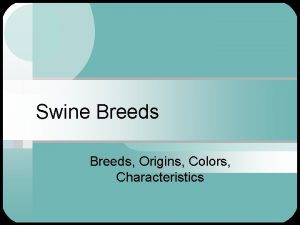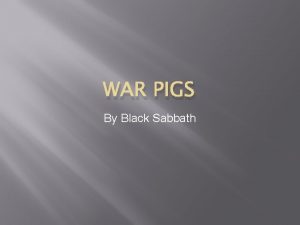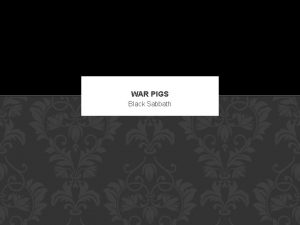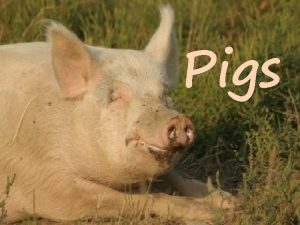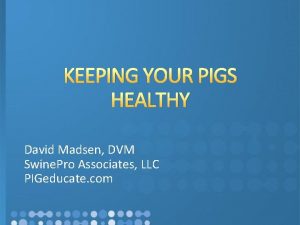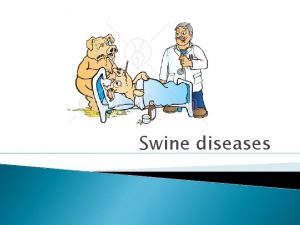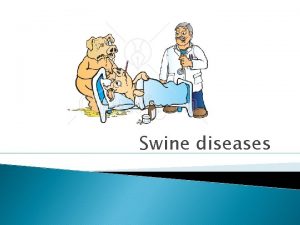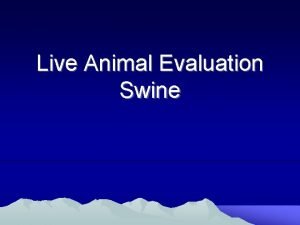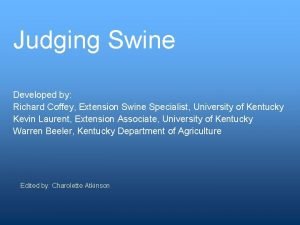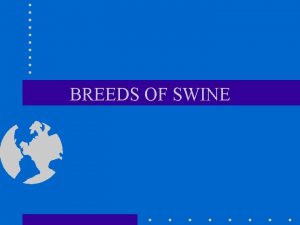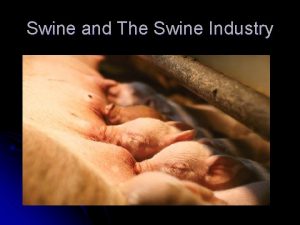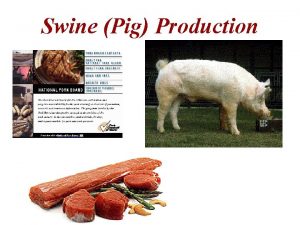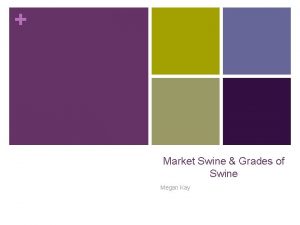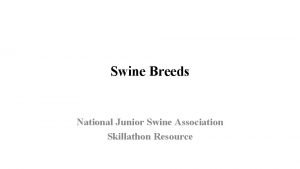Swine Management Characteristics of swine Pigs are Homeotherms




































- Slides: 36

Swine Management

Characteristics of swine § Pigs are Homeotherms § Maintain a constant body temperature § Pigs are Monogastrics § Pigs have very few sweat glands

Housing § Types of houses § Outside pen § A- frame houses § Open front buildings § Environmentally regulated buildings

Housing

Housing

Reproduction § § § Natural AI Heat period averages 2 days and occurs every 20 -21 days § Can synchronize gilts by putting them together and in a pen next to a boar § Lock up when in heat (Lordosis)

Reproduction

Reproduction § Boar penis is corkscrewed § AI rod has to be corkscrewed as well § Boar semen cannot be frozen § Shipped fresh overnight § 2 doses of semen are administered § 24 hours after 1 st incidence of standing heat § 12 hours later § Done because pigs are superovulaters

Farrowing § § § Farrowing – the act of parturition Gestation period- 114 days (3 X 3 X 3) Put into farrowing crates few days before expected parturition Sow’s can have any number of babies Wean at 21 days Pigs are very susceptible to disease § Many farms are total confinment

Farrowing Crates § Used to protect the baby pigs from being crushed by the sow § Sow is confined in the middle so that she can’t turn around § Equipped with feeder and watering device § Space on both sides of the sow for babies § Use a heat lamp to keep babies warm

Farrowing Crates

Navel Cord Care § After birth excess navel cord is removed § Leave about 1 inch § Treat navel cord with iodine § Why? § Prevent infection

Navel Cord Care

Clipping needle teeth § Born with only eight teeth § Fairly long and sharp § Can irritate the sow while nursing § Can remove these teeth to make more comfortable for the sow § We don’t clip

Clipping needle teeth

Tail Docking § Pigs are normally in a confined space § Chew on others tail § Done out of boredom § To prevent tail biting and the possibility of infection, tails are docked § Dock were tail can barely touch the pigs back

Tail Docking

Injections § 3 types of injections § Subcutaneous § Intramuscular § Intravenous § Two sites to give an injection § Neck § Ham

Injections

Injections

Injections

Injections § Iron is administered about 24 hours after birth § 1 cc of iron § Since pigs are in a create and don’t have access to soil, iron- deficiency anemia can occur § Some people give a small dose of antibiotic § Give the sow penicillin

Ear Notching § Most used identification method for baby pigs § Removing a portion of the ear § The notches grow as the pig grows § Permanent identification § Litter # and Pig # § Litter # - the pigs right ear § Pig # - the pigs left eat

Ear Notching § Litter # § Number of litter for the whole farm § Not for individual sow § Pig # § Individual number for the baby pig § Has nothing to do with the rest of the farm

Ear Notching

Ear Notching

Ear Notching

Castration § Removal of the testicles § Pigs are castrated if meant for slaughter § Meat from boars may have an odor when cooking § Takes testosterone out of the system, which makes meat tough

Castration § Best time for castration is between 1 and 14 days § Pigs are easier to restrain § Bleed less from the surgery § One person holds the pig by the back legs and the other person does the castrating § Make small incisions § Make sure to use some type of antiseptic spray

Castration

Castration

Castration

Castration

Parasites § Coccidia § Affects nursing pigs between days 5 and 15 § Develop a yellowish, very fluid diarrhea § Infected pigs do not respond well to antibiotic treatment § Mortality rates will be moderate to high

Parasites § Worms § § § § Roundworms Nodular worms Whipworms Threadworms Stomach worms Lungworms Kidney worms § Doesn’t occur much in baby pigs

Weaning § Baby pigs are weaned at 21 days § Put in a nursery for a few weeks § Until pigs are 40 – 45 lbs § Moved to other pens for growing and finishing
 Piloerection
Piloerection Antigentest åre
Antigentest åre Swine nutrition management
Swine nutrition management Swine sorting tools
Swine sorting tools Pig integumentary system
Pig integumentary system We went over
We went over Swine selection
Swine selection Livestock breed identification swine
Livestock breed identification swine Hoop building for hogs
Hoop building for hogs Dissection kit near me
Dissection kit near me How to read ear notches on pigs
How to read ear notches on pigs Anatomical planes
Anatomical planes Swine dysentery
Swine dysentery Swine dysentery
Swine dysentery Swine terms
Swine terms Hog anatomy
Hog anatomy Swine wholesale cuts
Swine wholesale cuts Swine digestive system
Swine digestive system Objectives of swine production
Objectives of swine production Swine digestive system
Swine digestive system Common breeds of swine
Common breeds of swine Swine digestive system
Swine digestive system Swine dummy sows
Swine dummy sows Objectives of swine production
Objectives of swine production Agriscience unit 30 self evaluation answers
Agriscience unit 30 self evaluation answers Digestive system of ruminant
Digestive system of ruminant Parts of a swine
Parts of a swine Suiscide hotline
Suiscide hotline Swine production introduction
Swine production introduction Livestock breed identification swine - vocabulary
Livestock breed identification swine - vocabulary Pyramid levels of management
Pyramid levels of management Management pyramid
Management pyramid Top management middle management first line management
Top management middle management first line management Plot diagram for a sound of thunder
Plot diagram for a sound of thunder Three pigs father
Three pigs father Rising action in the three little pigs
Rising action in the three little pigs The three little pigs once upon a time
The three little pigs once upon a time
